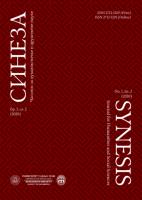Изградња Дома краља Петра I Великог Ослободиоца у Бањој Луци (Народно позориште Републике Српске)
New building of the Vrbas banovina National theater
Author(s): Ljiljana ČekićSubject(s): Cultural history, Architecture, Local History / Microhistory, Interwar Period (1920 - 1939)
Published by: Filozofski fakultet, Univerzitet u Banjoj Luci
Keywords: National Theatre; construction; Vrbas banovina;Banja Luka;
Summary/Abstract: This paper analyses the complex process of constructing the building of the King Peter I the Great Liberator cultural centre, a multi-purpose edifice that had to meet the needs of several cultural institutions, the largest of which was the National Theatre of the Vrbas Banovina. Founded through a political decision during the dictatorship of King Alexander I Karadjordjevic, in an extremely poor social environment ofthe Vrbas Banovina, the Banovina Theatre went through an extremely unstable period from the moment of its foundation to the day of entering new premises, in constant threat of being closed. The construction of the King Peter I the Great Liberator cultural centre made it possible for this institution to exist and provided room for theatrical art to continue to develop and for Banja Luka to become the centre of theatrical development of the Vrbas Banovina, that is, the region of Kraina, the presentday Republic of Srpska. Using the historiographical method to research into the extensive technical documentation, whose analysis makes for the bulk of this study, the data that is relevant for creating an accurate image of the overall process of constructing the building is pinpointed. Based on the data presented, the inductive method led provides insights not only into the problems encountered by the builders, but also into the way of functioning of theatrical life, which is defined both by artists and by the space and financial setting The analysis shows that the building was divided into sections designated for different cultural institutions (National Theatre; Museum, “Zmijanje” Cultural Society, Banja Luka Academic Club), into sections to accomodate audiences, and sections for the staff . The audience section is indicative of class divisions among spectators. The blueprint designs show that the intentions of the creators were to build the facility in a modern and quality way, and that the speed and non-professional contractors were responsible forcountless mistakes during the construction..The speed was conditioned by Tisa Milosavljevic’s intention to complete the entire process before he left the Vrbas Banovina. Unplanned, the completion of the construction of the building takes place at the time of the assassination of King Alexander I Karadjordjevic and the change of the political and social atmosphere in the Kingdom of Yugoslavia.
Journal: Sineza
- Issue Year: 1/2020
- Issue No: 2
- Page Range: 9-30
- Page Count: 22
- Language: Serbian

